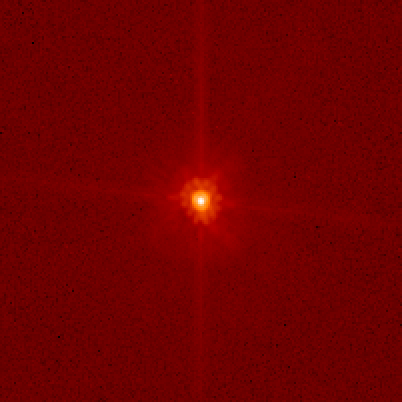H
h2ouniverse
Guest
The properties of Makemake begin to be identified, see abstract below. Makemake had been considered a uniform, dull body. It might be simply due to an axial tilt making it viewed pole on as suggested by the authors of this paper.
http://www.iop.org/EJ/abstract/1538-3881/138/2/428
Abstract from a paper of Heinze and deLahunta
ABSTRACT. Kuiper Belt dwarf planet 136472 Makemake, formerly known as 2005 FY9, is currently the third-largest known object in the Kuiper Belt, after the dwarf planets Pluto and Eris. It is currently second only to Pluto in apparent brightness, due to Eris' much larger heliocentric distance. Makemake shows very little photometric variability, which has prevented confident determination of its rotation period until now. Using extremely precise time-series photometry, we find that the rotation period of Makemake is 7.7710 ± 0.0030 hr, where the uncertainty is a 90% confidence interval. An alias period is detected at 11.41 hr, but is determined with approximately 95% confidence not to be the true period. Makemake's 7.77 hr rotation period is in the typical range for Kuiper Belt objects, consistent with Makemake's apparent lack of a substantial satellite to alter its rotation through tides. The amplitude of Makemake's photometric light curve is 0.0286 ± 0.0016 mag in V. This amplitude is about 10 times less than Pluto's, which is surprising given the two objects' similar sizes and spectral characteristics. Makemake's photometric variability is instead similar to that of Eris, which is so small that no confident rotation period has yet been determined. It has been suggested that dwarf planets such as Makemake and Eris, both farther from the Sun and colder than Pluto, exhibit lower photometric variability because they are covered with a uniform layer of frost. Such a frost is probably the correct explanation for Eris. However, it may be inconsistent with the spectrum of Makemake, which resembles reddish Pluto more than neutrally colored Eris. Makemake may instead be a more Pluto-like object that we observe at present with a nearly pole-on viewing geometry—a possibility that can be tested with continuing observations over the coming decades.
http://www.iop.org/EJ/abstract/1538-3881/138/2/428
Abstract from a paper of Heinze and deLahunta
ABSTRACT. Kuiper Belt dwarf planet 136472 Makemake, formerly known as 2005 FY9, is currently the third-largest known object in the Kuiper Belt, after the dwarf planets Pluto and Eris. It is currently second only to Pluto in apparent brightness, due to Eris' much larger heliocentric distance. Makemake shows very little photometric variability, which has prevented confident determination of its rotation period until now. Using extremely precise time-series photometry, we find that the rotation period of Makemake is 7.7710 ± 0.0030 hr, where the uncertainty is a 90% confidence interval. An alias period is detected at 11.41 hr, but is determined with approximately 95% confidence not to be the true period. Makemake's 7.77 hr rotation period is in the typical range for Kuiper Belt objects, consistent with Makemake's apparent lack of a substantial satellite to alter its rotation through tides. The amplitude of Makemake's photometric light curve is 0.0286 ± 0.0016 mag in V. This amplitude is about 10 times less than Pluto's, which is surprising given the two objects' similar sizes and spectral characteristics. Makemake's photometric variability is instead similar to that of Eris, which is so small that no confident rotation period has yet been determined. It has been suggested that dwarf planets such as Makemake and Eris, both farther from the Sun and colder than Pluto, exhibit lower photometric variability because they are covered with a uniform layer of frost. Such a frost is probably the correct explanation for Eris. However, it may be inconsistent with the spectrum of Makemake, which resembles reddish Pluto more than neutrally colored Eris. Makemake may instead be a more Pluto-like object that we observe at present with a nearly pole-on viewing geometry—a possibility that can be tested with continuing observations over the coming decades.



